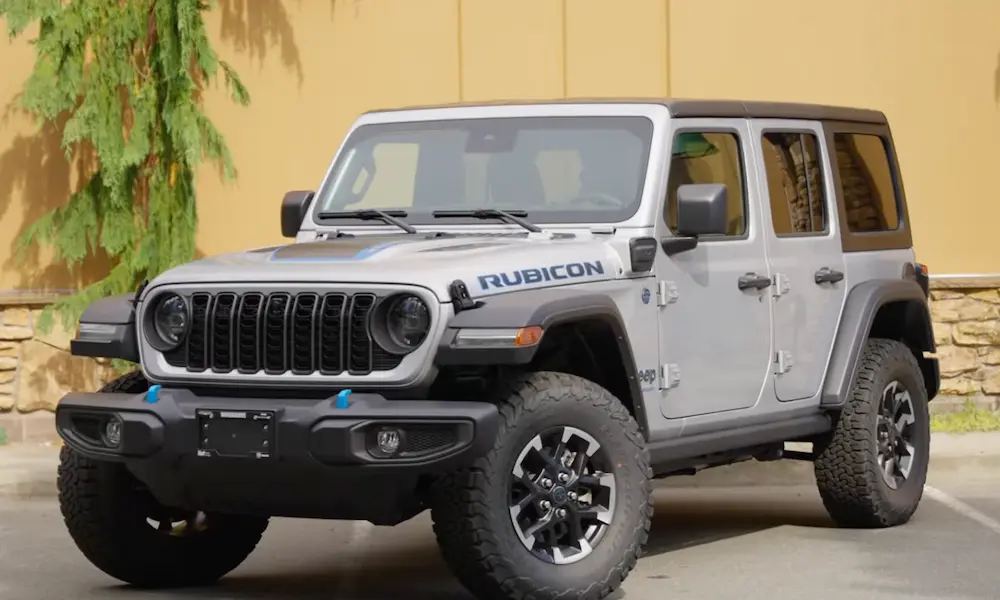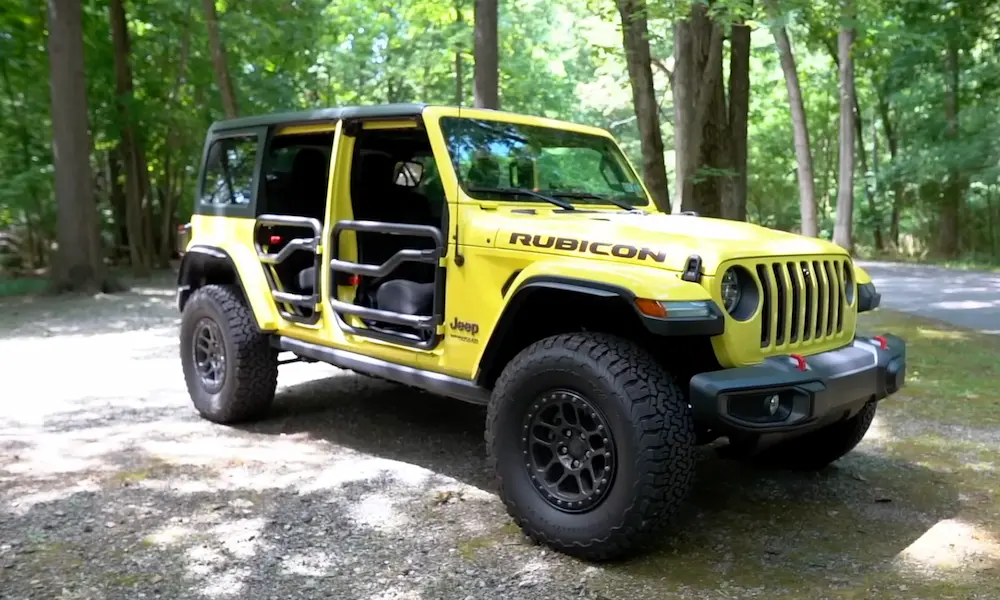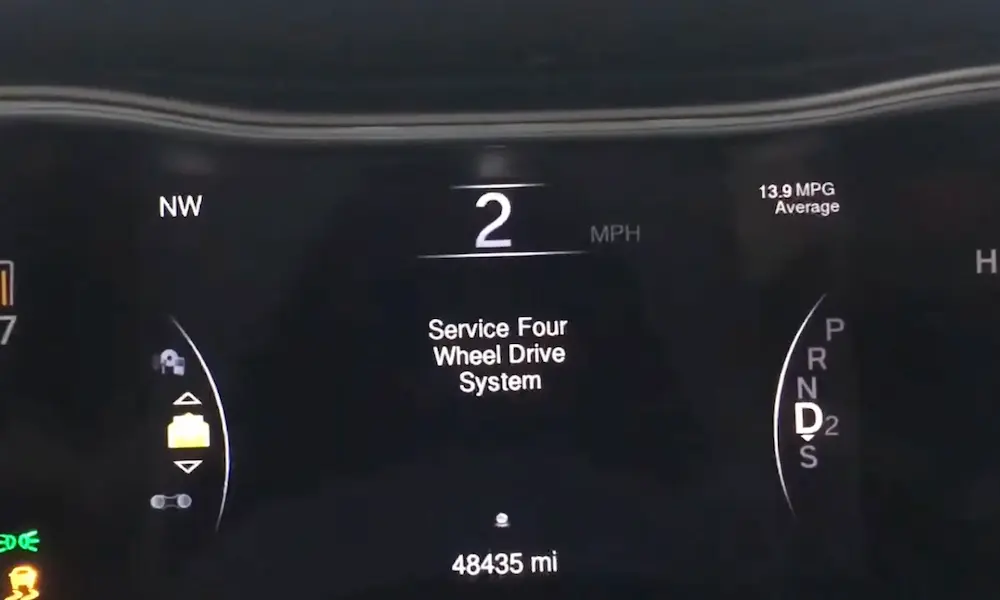Owning a Jeep Grand Cherokee means dealing with some maintenance tasks, including looking after the fuel filter. To locate the fuel filter on most models, you will either need to check under the hood or underneath the vehicle. Keeping the fuel filter clean ensures your engine runs smoothly and prevents impurities from entering the fuel system. Continue reading to learn how to find and replace it yourself.
Locating the Jeep Grand Cherokee Fuel Filter
Finding the fuel filter on your Jeep Grand Cherokee can be a bit tricky, but with the right information, it becomes manageable. Where the fuel filter is located depends on whether your vehicle runs on gasoline or diesel.
Fuel Filter in Gasoline Models
For gasoline Jeep Grand Cherokees, the fuel filter is typically located under the vehicle, near the gas tank. You will need to remove the skid plate to access it. Look to the right side of the gas tank underneath the car. Some models have the fuel filter integrated into the fuel pump, which is located inside the tank, and is not easily serviceable.
To replace the fuel filter, you will first need to relieve the fuel system pressure. Then, safely raise and support your vehicle. Remove the skid plate, if necessary, to gain access.
Refer to the owner’s manual or specific guides for your model year, as the location and setup may vary slightly. Keep all tools and parts needed handy to ensure a smooth replacement process.
Fuel Filter in Diesel Models
In diesel models of the Jeep Grand Cherokee, like the 3.0 Diesel, you will find the fuel filter under the hood. Unlike gasoline models, diesel filters are usually more accessible. Look for the fuel filter near the engine bay, close to the fuel lines.
These models often have a priming system to remove air from the fuel lines after changing the filter. Ensure you follow the proper steps for your vehicle to avoid issues with the engine starting or running smoothly.
Both fuel filters are designed for extended service. It’s important to follow the specific maintenance schedule for your diesel engine to keep it running efficiently and avoid any trouble.
When to Replace the Fuel Filter
Replacing the fuel filter in your Jeep Grand Cherokee is important for maintaining good engine performance.
Check the Owner’s Manual: Always start by looking at your Owner’s Manual. It will have specific recommendations tailored to your vehicle.
Service Intervals: On average, the fuel filter should be replaced every 30,000 miles. If you frequently drive in dusty or rough conditions, you might need to do it sooner.
Signs of a Clogged Fuel Filter:
- Difficulty starting the engine
- Reduced fuel efficiency
- Engine misfires or stalling
If you notice any of these signs, it’s time for a replacement.
During Regular Service: Sometimes, your mechanic will check the fuel filter during routine service. It’s always a good idea to ask them to take a look.
Service Manual Check: Consult the Service Manual for detailed instructions on how to replace the fuel filter. This is particularly useful if you decide to do it yourself.
Buying a New Filter: When buying a new filter, make sure it is compatible with your specific model.
Taking care of your Jeep Grand Cherokee’s fuel filter helps ensure a smooth and safe ride.
Step-by-Step Fuel Filter Replacement
Replacing the fuel filter on your Jeep Grand Cherokee is essential to maintain engine performance. In this guide, you’ll find everything you need to know about preparation, safe removal, and installation of the new filter.
Preparation and Safety
To begin, make sure your vehicle is parked on a flat surface. You should also ensure the engine is turned off and cool to avoid any accidents. Gather the necessary tools, such as wrenches, a fuel line disconnect tool, and a new fuel filter. Safety is crucial, so wear protective gloves and eyewear.
The fuel filter is located under the Jeep near the center above the differential. Before starting, relieve the fuel system pressure by removing the fuel pump fuse or relay and starting the engine until it dies. This step will minimize fuel spillage and make the process safer.
Removing the Old Fuel Filter
First, locate the fuel filter by following the fuel lines. Once located, use the fuel line disconnect tool to detach the quick-release fittings at both ends of the filter. You might need to press in tabs with your fingers to release the hoses.
Place a container or cloth underneath to catch any dripping fuel. Caution is key during this step, as fuel can be hazardous. After disconnecting the fuel lines, remove the bolts or clips holding the filter in place.
Carefully take out the old filter, ensuring you do not spill any fuel. If the old filter has a built-in water separator, dispose of it properly following local regulations.
Installing the New Filter
Take the new fuel filter and check its direction. An arrow on the filter indicates the fuel flow direction, which should point toward the engine. Attach the quick-release fittings to each end of the filter, making sure they click into place securely.
Secure the new filter by tightening the bolts or clips you removed earlier. After installation, reinstall the fuel pump fuse or relay and start the engine. Check for leaks around the filter area, confirming that the installation is secure and leak-free.
Your Jeep is now equipped with a new fuel filter, ensuring efficient fuel flow and engine performance.
Maintenance Tips and Tricks
Regular maintenance of your Jeep Grand Cherokee’s fuel filter is essential for a smooth ride. Here are some tips and tricks to keep the fuel system in top shape:
Check for Clogs
A clogged fuel filter can cause engine problems. Always inspect for dirt and debris. If you notice your Jeep struggling to start or lacking power, it might be a sign the filter is clogged.
Inspect the Fuel Filter Module
The fuel filter module is a critical part of your Jeep’s fuel system. Make sure the module is not damaged and is securely attached. If you find any cracks or issues, replace the module immediately.
Change the Filter Regularly
For optimal performance, change the fuel filter every 10,000 miles. This ensures that your fuel system is free of impurities that can harm the engine.
Use Clean Fuel
Always use clean, high-quality fuel. Contaminated fuel can quickly clog the filter, leading to various issues in the fuel system.
Watch for Water
Water in your fuel can be disastrous. Use fuel additives that help remove water and prevent rust. If you suspect water in your fuel system, address the issue promptly.
Pay Attention to the Sensor
Many modern Jeeps have sensors that monitor the fuel filter’s condition. Pay attention to dashboard alerts and replace the filter if the sensor indicates a problem.
Taking care of your Jeep Grand Cherokee’s fuel filter can save you from costly repairs and keep your vehicle running smoothly. Keep these tips in mind and enjoy your ride!
Understanding the Importance of a Clean Fuel System
A clean fuel system is crucial for your Jeep Grand Cherokee’s performance. Your fuel filter plays a key role in this. It removes impurities and debris from the fuel before it reaches the engine.
When the fuel filter gets clogged, your Jeep’s performance can suffer. This can lead to slow acceleration, poor fuel efficiency, and even engine misfires.
Another important component is the fuel pump module. It works with the fuel filter to ensure that clean fuel is delivered consistently to the engine.
Regularly inspecting and replacing the fuel filter helps prevent these issues. Keeping your fuel line clear ensures smooth fuel flow, reducing the risk of damage to other parts of the fuel system.
A clean fuel system means fewer trips to the mechanic and a more reliable Jeep Grand Cherokee. Plus, it helps you get the most out of every gallon of fuel.
Maintaining these components not only keeps your Jeep in good health but also extends the lifespan of the entire engine system. Make sure to check them regularly for the best performance.
Troubleshooting Common Fuel Filter Issues
When dealing with fuel filter problems in your Jeep Grand Cherokee, there are specific symptoms and failures to look out for. This will help you identify whether the issue is with the fuel filter or another component of your fuel system.
Symptoms of a Clogged Fuel Filter
A clogged fuel filter can cause several noticeable symptoms while driving. One of the most common signs is a loss of engine power, especially when accelerating. You might also notice that your vehicle is harder to start or fails to start at all. This is because the fuel isn’t reaching the engine effectively.
Another symptom is stalling. If your engine is stalling frequently, especially under load, it could be due to a clogged filter. Pay attention if your Jeep is running rough at idle, as this can also indicate a fuel delivery issue.
Poor fuel economy can also be a sign. If your Jeep is using more fuel than usual, it’s worth checking if the filter is clogged and restricting fuel flow.
Potential Fuel System Component Failures
The fuel system in your Jeep Grand Cherokee includes several components that can fail, causing similar symptoms to a clogged fuel filter. One critical part is the fuel pump. A faulty fuel pump can mimic a clogged filter by failing to deliver enough fuel to the engine.
Additionally, fuel injectors can become dirty or clogged. This can cause uneven fuel distribution and make the engine run poorly. You also need to check various sensors, especially those monitoring fuel pressure. A failed sensor can report incorrect data, leading to poor performance.
For Diesel engines, there is often a filter/water separator near the transmission. If this part fails or becomes clogged, it can also cause engine performance issues.
Make sure to rule out these possibilities before concluding the problem lies solely with the fuel filter. This helps avoid unnecessary replacements and ensures proper diagnosis.












